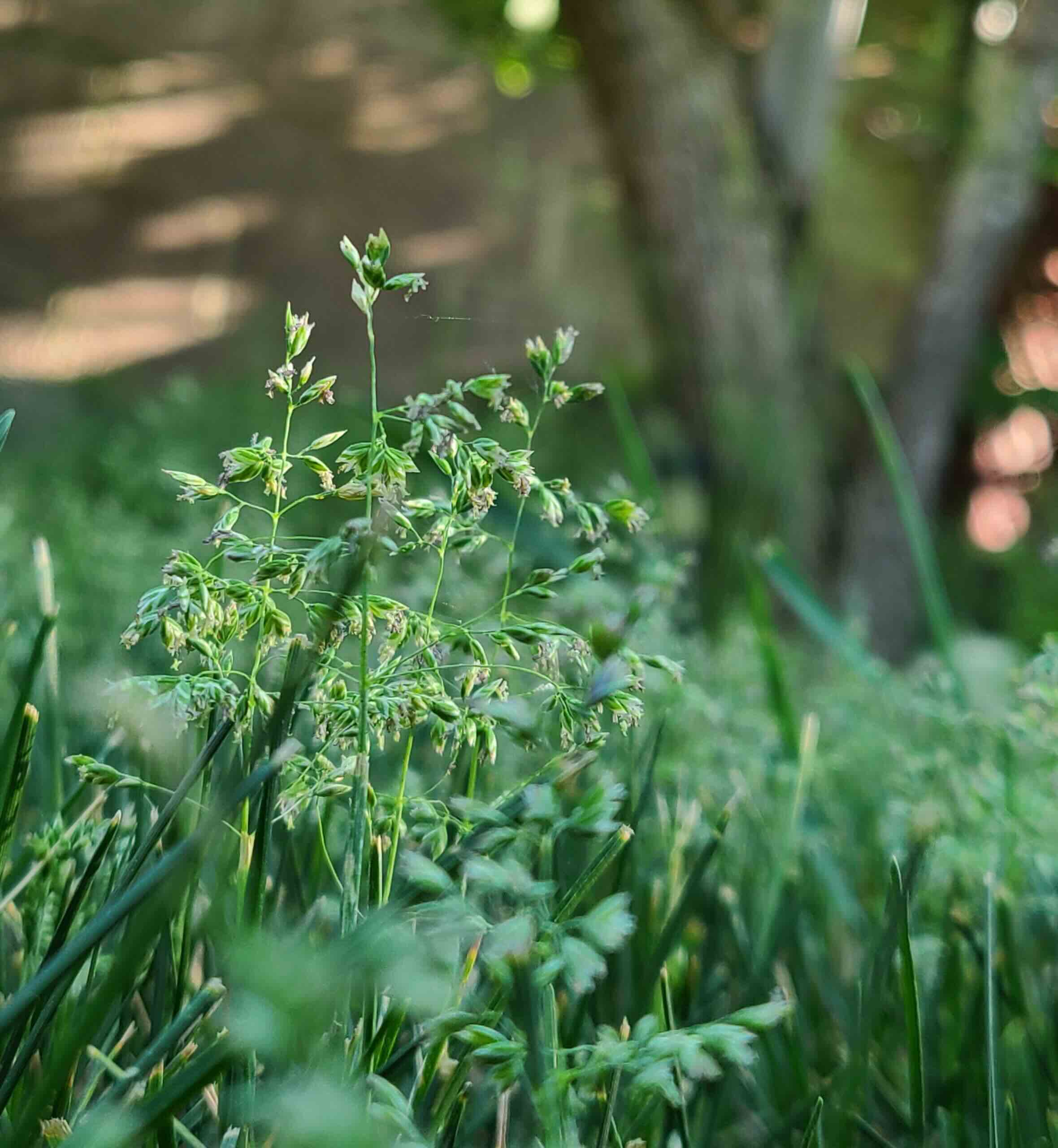Home>Gardening & Outdoor>Landscaping Ideas>Why Is It Called Bluegrass


Landscaping Ideas
Why Is It Called Bluegrass
Published: February 1, 2024
Discover the origins of the term "bluegrass" and its connection to landscaping ideas. Uncover the history and significance of this unique name.
(Many of the links in this article redirect to a specific reviewed product. Your purchase of these products through affiliate links helps to generate commission for Storables.com, at no extra cost. Learn more)
Introduction
When it comes to landscaping, the term "bluegrass" evokes images of lush, verdant lawns and sprawling fields. However, the term "bluegrass" holds a deeper significance beyond its association with picturesque landscapes. It also resonates with the captivating melodies and rich cultural heritage of a distinct genre of American music. In this article, we will delve into the origins of the name "bluegrass" and explore its profound influence on music and culture.
The term "bluegrass" carries a sense of nostalgia and tradition, conjuring visions of rolling hills and the soothing sounds of acoustic instruments. It is a term that encapsulates the essence of a musical genre that has captivated audiences for generations. As we embark on this exploration, we will uncover the fascinating origins of the name "bluegrass" and gain insight into the enduring legacy of this beloved musical tradition.
The allure of bluegrass extends far beyond its musical prowess; it embodies a spirit of camaraderie and storytelling that has transcended time. As we unravel the layers of history and culture intertwined with the term "bluegrass," we will gain a deeper appreciation for the enduring impact of this cherished art form. Join us on this journey as we uncover the captivating story behind the name "bluegrass" and its enduring significance in the realm of music and culture.
Key Takeaways:
- “Bluegrass” Origin Story
Bluegrass music got its name from the lush bluegrass region of Kentucky, where the genre flourished. It embodies the spirit of rural America and the enduring legacy of a musical tradition. - Bluegrass Music Today
Contemporary bluegrass has evolved to captivate audiences with fresh perspectives and innovative approaches. It embraces new avenues of creativity while preserving its cherished traditions.
Read more: Why Is It Called Silverware
Origin of the Name "Bluegrass"
The origin of the term "bluegrass" can be traced back to the region where the musical genre first took root: the hills and valleys of Kentucky. The name "bluegrass" is a nod to the famed bluegrass state, where this distinctive style of music flourished. However, the connection between the vibrant greenery of Kentucky's landscapes and the name "bluegrass" runs deeper than mere geographical association.
The term "bluegrass" gained prominence in the mid-20th century, as the genre began to garner widespread recognition. It is widely believed that the name was inspired by the Bluegrass Boys, a band fronted by the legendary musician Bill Monroe. As a pioneer of the bluegrass genre, Monroe's band played a pivotal role in popularizing the distinctive sound that would come to be known as bluegrass music.
The term "bluegrass" also pays homage to the bluegrass region of Kentucky, renowned for its fertile soil and sprawling pastures. This picturesque landscape, characterized by an abundance of bluegrass, served as a fitting namesake for a genre of music that embodies the rustic charm and natural beauty of the region.
Furthermore, the term "bluegrass" encapsulates the essence of the music itself, evoking images of rolling hills and open fields where the soothing melodies of banjos, fiddles, and mandolins resonate. The name serves as a testament to the deep-rooted connection between the music and the land from which it emerged, capturing the spirit of rural America and the timeless traditions that define the genre.
In essence, the name "bluegrass" serves as a poignant tribute to the geographical, cultural, and musical elements that converged to give rise to this beloved genre. It embodies the spirit of Kentucky's bluegrass region, the pioneering musicians who shaped the genre, and the enduring legacy of a musical tradition that continues to captivate audiences around the world.
The origin of the name "bluegrass" is a testament to the rich tapestry of history, culture, and natural beauty that defines this cherished genre. It serves as a reminder of the deep-seated connection between music and the land, and the enduring influence of tradition and heritage on artistic expression.
Influence of Bluegrass Music
The influence of bluegrass music extends far beyond its melodic allure, permeating the cultural fabric of American music and leaving an indelible mark on the global musical landscape. With its roots deeply embedded in the rural traditions of the Appalachian region, bluegrass music has transcended geographical boundaries to become a revered and influential genre. Its impact can be observed in several key areas, each contributing to its enduring legacy.
Preservation of Tradition
Bluegrass music serves as a custodian of tradition, preserving the rich musical heritage of rural America. Its distinctive blend of folk, gospel, and blues elements encapsulates the essence of a bygone era, offering a glimpse into the cultural tapestry of the Appalachian region. Through its evocative lyrics and spirited instrumentation, bluegrass music keeps alive the stories and experiences of generations past, fostering a profound connection to the traditions of yesteryear.
Evolution of Musical Styles
The influence of bluegrass music reverberates across diverse musical genres, inspiring artists and shaping the evolution of contemporary music. Its intricate instrumental arrangements and emotive vocal harmonies have left an indelible imprint on genres ranging from country and folk to rock and blues. The virtuosity displayed by bluegrass musicians has set a standard for technical prowess and musical innovation, influencing a myriad of artists across the musical spectrum.
Read more: Why Is It Called A Vanity
Cultural Impact
Bluegrass music has transcended its musical realm to become a cultural phenomenon, embodying the spirit of community and camaraderie. Its roots in rural Appalachia reflect the resilience and resourcefulness of a close-knit community, fostering a sense of unity and shared heritage. Festivals and gatherings dedicated to bluegrass music serve as vibrant celebrations of this cultural legacy, bringing together enthusiasts from all walks of life to revel in the timeless allure of the genre.
Global Reach
The influence of bluegrass music has transcended national borders, captivating audiences around the world with its heartfelt melodies and captivating rhythms. From the hills of Kentucky to international stages, bluegrass music has garnered a global following, resonating with listeners across diverse cultures and languages. Its universal appeal lies in its ability to evoke emotions and narratives that transcend linguistic barriers, forging connections that span continents.
Inspirational Legacy
The influence of bluegrass music extends beyond its immediate impact, leaving an inspirational legacy for future generations of musicians and enthusiasts. Its enduring allure serves as a wellspring of creativity and artistic expression, inspiring a new wave of performers to embrace the timeless traditions of the genre while infusing their own unique perspectives. The legacy of bluegrass music continues to inspire and shape the musical landscape, ensuring its enduring influence for years to come.
In essence, the influence of bluegrass music is a testament to its enduring resonance and cultural significance. From its role as a guardian of tradition to its far-reaching impact on global audiences, bluegrass music stands as a testament to the enduring power of music to unite, inspire, and transcend boundaries. Its influence continues to shape the musical landscape, ensuring that the timeless allure of bluegrass music remains an integral part of our cultural heritage.
Bluegrass Music Today
Bluegrass music continues to thrive in the contemporary musical landscape, maintaining its cherished traditions while embracing new avenues of creativity and expression. In today's dynamic music scene, bluegrass has evolved to captivate audiences with its timeless allure and enduring relevance.
Read more: Why Is A Napkin Called A Napkin
Evolution of Contemporary Bluegrass
In recent years, contemporary bluegrass has witnessed a resurgence, with a new generation of musicians infusing the genre with fresh perspectives and innovative approaches. While honoring the genre's roots, these artists have reimagined bluegrass, incorporating elements of modern folk, Americana, and even rock to create a vibrant and eclectic sound. This evolution has broadened the genre's appeal, attracting diverse audiences and breathing new life into the timeless traditions of bluegrass music.
Collaborative Cross-Pollination
One of the defining features of bluegrass music today is its collaborative spirit, as artists from various musical backgrounds come together to explore new sonic frontiers. This cross-pollination of genres has led to captivating fusions, blending the soulful melodies of bluegrass with the energy of rock, the introspection of folk, and the raw emotion of blues. The result is a rich tapestry of musical expression that resonates with audiences across generations, forging connections that transcend traditional boundaries.
Global Resonance and Outreach
In an era of interconnectedness, bluegrass music has transcended geographical confines to resonate with audiences around the globe. From intimate acoustic performances in local venues to grand stages at international music festivals, bluegrass has found a global audience eager to embrace its heartfelt narratives and spirited instrumentation. Its universal appeal lies in its ability to evoke emotions that transcend linguistic and cultural barriers, fostering a sense of unity and shared experience among listeners worldwide.
Preservation of Authenticity
Amidst the evolution and expansion of contemporary bluegrass, a steadfast commitment to authenticity remains at the genre's core. Esteemed musicians and dedicated enthusiasts continue to uphold the timeless traditions of bluegrass, ensuring that its rich heritage endures for future generations. From grassroots jam sessions to revered music halls, the spirit of bluegrass lives on, fostering a sense of community and camaraderie that embodies the enduring legacy of the genre.
Read more: Why Is It Called Car Decking
Enduring Legacy and Innovation
As bluegrass music continues to thrive in the modern era, its enduring legacy intertwines with innovative expressions, ensuring its relevance for years to come. The genre's ability to adapt and evolve while staying true to its roots speaks to its enduring appeal and cultural significance. Bluegrass music today stands as a testament to the timeless power of music to unite, inspire, and transcend boundaries, ensuring that its captivating melodies and heartfelt narratives continue to resonate with audiences for generations to come.
In essence, bluegrass music today embodies a harmonious blend of tradition and innovation, captivating audiences with its timeless allure while embracing new horizons of musical expression. As the genre continues to evolve and inspire, its enduring legacy remains a testament to the profound impact of bluegrass music on the cultural tapestry of our world.
Frequently Asked Questions about Why Is It Called Bluegrass
Was this page helpful?
At Storables.com, we guarantee accurate and reliable information. Our content, validated by Expert Board Contributors, is crafted following stringent Editorial Policies. We're committed to providing you with well-researched, expert-backed insights for all your informational needs.













0 thoughts on “Why Is It Called Bluegrass”